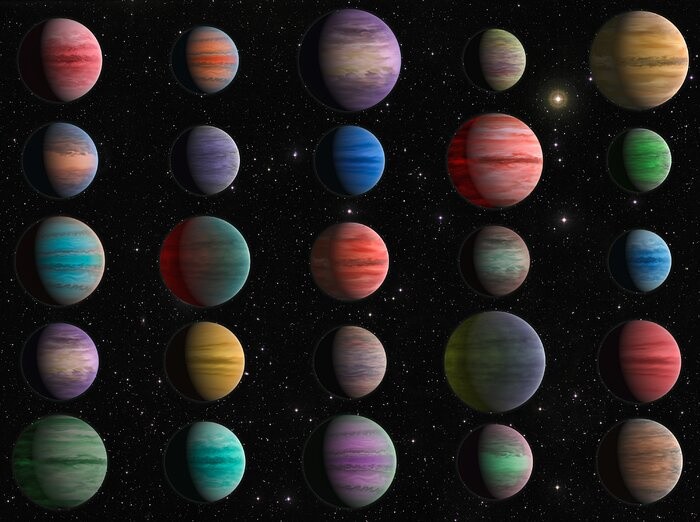
Hubble Space Telescope has been spying on exoplanets for the longest time. Now, a team of astronomers is analyzing the observations it made on 25 hot Jupiters to answer five questions needed to learn and understand exoplanet atmospheres.
Hot Jupiters are gas giant planets that physically look similar to Jupiter, with an orbital period of less than 10 days. They are very close to their stars, which gives them high surface temperatures. The new study is a shift from detection and characterization of exoplanets to analyzing their atmosphere.
Archival observations of 25 hot Jupiters by the NASA/ESA Hubble Space Telescope have been analysed by an international team of astronomers, enabling them to answer five open questions important to our understanding of exoplanet atmospheres.
Data on 25 Hot Jupiters Help Explain Exoplanet Atmosphere
Detection and characterization of exoplanets are extremely challenging. Astronomers from the University College London (UCL) are focusing their attention on characterizing and modeling exoplanets by using a large archival data of 25 hot Jupiters to examine their atmospheres, according to a news release from the European Space Agency (ESA).
A large amount of data came from the NASA/ESA Hubble Space Telescope that captured those exoplanets. Study lead author Quentin Changeat explains that through this archive data, they hope to learn about the atmosphere of exoplanets, particularly their chemistry and formation.
The team sought to find answers to five open questions about the atmosphere of exoplanets. These questions probe what finding hydrogen and certain metals in their atmosphere could tell scientists about exoplanet formation.
They decided to study 25 hot Jupiters because it will help them identify trends within their sample population that could provide insights into the exoplanet atmosphere. As study co-author Billy Edwards from UCL said, the study marks the turning point of exoplanet detection to the characterization of individual atmospheric populations.
What Did Researchers Find?
Digital Trends reported that the team combed through 600 hours of Hubble observation and 400 hours of observation from the Spitzer Space Telescope, looking at eclipses and transits to learn correlations between atmospheric composition and other qualities.
They found that thermal inversion is present among the hottest exoplanets with temperatures of more than 2,000 Kelvin. More so, the team discovered hydrogen ions, iron hydride, titanium oxide, and vanadium oxide in almost all of the atmospheres of hot Jupiters.
Furthermore, the research also shows how large amounts of data can be used to look for large-scale trends in exoplanets, which is useful in predicting what other exoplanets could be like in outer space.
Changeat added that studying characteristics of individual atmospheres of exoplanets helps scientists further understand the Solar System since many of the mysteries of its formation, including the histories of each planet and their moons, have remained unsolved despite the new technology present that can obtain in-situ measurements.
"Large exoplanet population studies, such as the one we present here, aim at understanding those general processes," Changeat said in a statement in the news release.
Check out more news and information on Exoplanets in Science Times.










